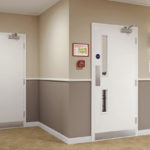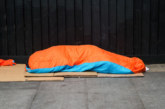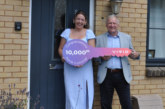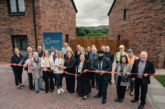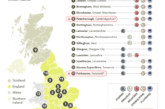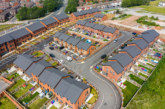Glyn Hauser, R&D Senior Group Manager at JELD-WEN explores the importance of secure door design and its role in helping landlords to better protect tenants.
It’s easy to see why security is such a big issue amongst social housing properties. Not only can multiple-occupancy properties feel less secure because of the quantity of people accessing common spaces throughout the day and night, but many tenants could unknowingly be compromising security for their neighbours. However, a secure high performing flat entrance doorset can offer a highly effective and relatively simple solution to keeping residents safe and intruders out.
Those living in social housing can be considered far more vulnerable than private renters and homeowners. Research has found that social renters are three times more at risk of being burgled than homeowners[1], and while some UK neighbourhoods remain tightly knit, it often seems as if Britain’s community spirit is waning.
To see how this is affecting tenants living in social accommodation, we recently commissioned research to explore how secure they felt within their homes, and how important it was for their front door to offer a high level of security.
Of 1,000 respondents[2], one in four residents living in a multi-occupancy property reported that a security breach had taken place in their building over the last 12 months, with 23% of tenants raising concerns about security to their landlord, and a third (33%) not feeling that their home offers adequate protection against a break in.
This comes as almost half (47%) of all respondents felt that crime was increasing in their area. As some of the most vulnerable residents, it is also concerning that 44% of those living in a local authority property had personally felt the need to invest in additional security equipment in the past year, including CCTV, recording doorbells and security lights for their homes.
Despite these findings, a third (32%) admitted to leaving their front door unlocked overnight and well over half (57%) would leave it unlocked during the day, which is when most burglaries take place. A further quarter (24%) felt their front door was not secure.
Wider evidence suggests that those living in more deprived areas are likely to experience a weaker sense of attachment to their neighbourhoods, particularly where there is a decline in social infrastructure, which limits opportunities to meet and engage in community life[3], meaning neighbours are less inclined to look out for one another. As winter looms, and the cost-of-living crisis deepens, the risk of crime is increasing.
With this in mind, the landlord should perhaps listen closely to the needs of their tenants to ensure that they feel safe in their own homes. When building or retrofitting a property, it may also work in the landlord’s favour with the likes of insurance companies, to specify doors with the SBD stamp of approval.
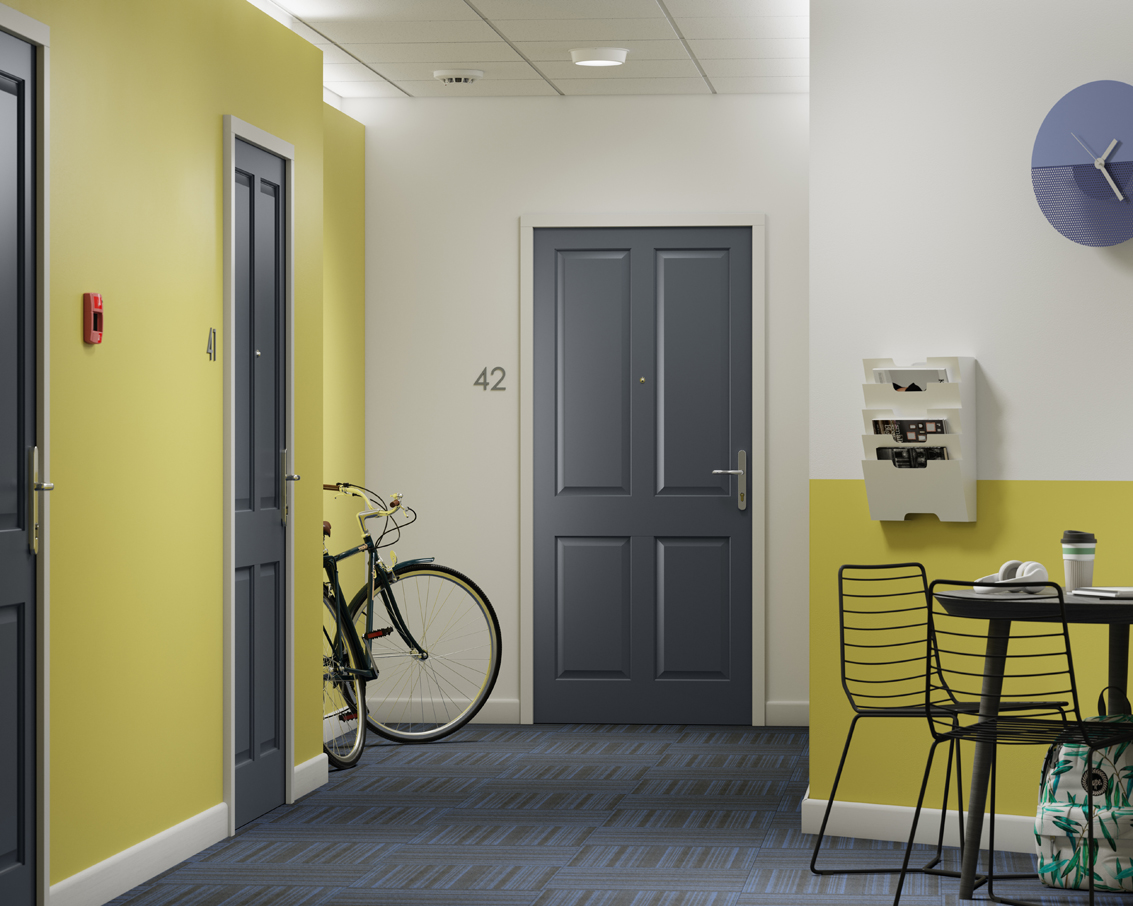
More than just a door
Amongst increasing inflation, budget cuts and evolving regulations, we are all experiencing a challenging and uncertain economic landscape. Certain gaps in regulation and lack of clarity in the guidance can also make it difficult for landlords to ascertain exact best practice. However, there is considerable opportunity for social landlords to elevate security standards amongst their residents and better protect tenants.
Procuring an accredited and certified doorset that has been designed to meet the rigorous standards of enhanced security testing and performance (as defined by the UK police security initiative ‘Secured by Design’ (SBD)) is important for increasing the effectiveness against a potential break in.
Thieves are typically opportunistic and seek out weak points of entry when attempting a burglary. If a front entrance door looks like it will be easy to force open, it’s much more likely that they will attempt to break in than one that appears to be reinforced with anti-theft design features.
Similarly, if a previous security breach has occurred in a flat that has an identical entrance door to those surrounding it, and nothing has been done to make security upgrades, there is a higher chance that neighbouring properties could become the target of a future break-in.
In social housing, there is a common misconception amongst those living in multiple-occupancy properties that their dwelling will be protected via the security that comes from a communal entrance point. However, shared responsibility from other tenants means that this isn’t always the case, with previous reports of fire doors being propped open and non-residents having access to the building compromising the ability to keep crime out[4].
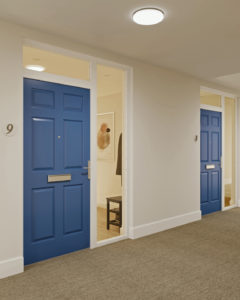
Deter and defend
Investing in an SBD-certified flat entrance doorset for individual dwellings can effectively reduce, if not negate, the appeal of one of the most effective access points for burglars.
Should someone attempt to force entry, landlords can rest in the assurance that the SBD-stamp of approval means that the door’s design incorporates a number of construction features, as defined by the police, that go above legal requirements and have proven resistant against physical attack.
Certification requires PAS24 testing by an independent third-party from a United Kingdom Accreditation Service (UKAS) authority, which ensures measured conformity. Each doorset will go through intense and rigorous assessments, measuring resistance against soft and hard body impact, through to hardware attack and manipulation, and endurance testing.
More recently, SBD has campaigned that dual certification of fire-rated doors — which provides assurance that a door works from both a security and fire control perspective — should also test for smoke permeability, to ensure even further protection for residents.
The result is a landlord’s best chance of reducing risk and keeping properties and tenants safe and secure. This comes as various academic research studies demonstrate that products independently certificated to SBD standards are responsible for supporting consistently high reductions in crime.
Unlocking the opportunity
Despite a gradual decline in recent years, tenants in social housing are still more likely to be victims of crime, such as burglary and theft[5], and as a deepening cost-of-living crisis increases this risk — alongside reports that a quarter of tenants do not feel that their front door offers an adequate level of security — it has never been more important to ensure that residents have the protection they need to feel safe in their own homes.
Since January, social landlords will already have had to get to grips with new regulation including routine checks and inspections of fire doors. Given that internal breaches are equally important — particularly when it comes to safety — there’s a clear opportunity to pay due diligence to security as part of both new-build and retrofit processes, and address two major concerns in one. Our hope is that social landlords listen to their residents’ concerns and consider the impact secure doorsets can have in creating a safer community.
[1] https://www.wired-gov.net/wg/news.nsf/articles/Burglary+risk+highest+for+least+advantaged+groups+04092017111000?open
[2] One Poll research, September 2023
[3] https://www.independent.co.uk/life-style/social-media-burglary-rise-expensive-purchases-location-tag-bragging-study-a8432746.html
[4] https://www.insidehousing.co.uk/sponsored/how-aware-are-social-landlords-of-the-level-of-security-in-resident-buildings
[5] https://www.gov.uk/government/publications/the-charter-for-social-housing-residents-social-housing-white-paper/the-charter-for-social-housing-residents-social-housing-white-paper


